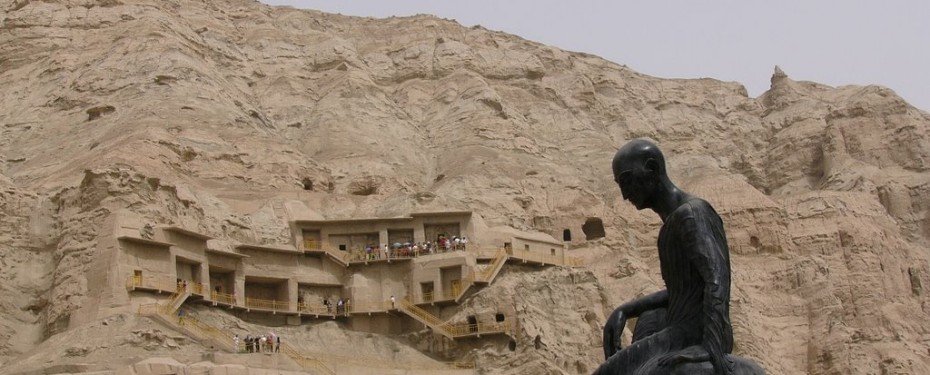Kizil Thousand Buddha Caves
The Kizil Thousands Buddha Caves is a series of caves cut into the cliff wall on the north bank of the Weigan River Valley in southern Xinjiang. The Kizil caves are over 1500 years old, one of the four famous Buddhist grottoes in China and were a part of thriving commercial hub on the ancient Silk Road.
The Caves
The entire complex consists of 238 caves dug into the side of the cliff by hand and stretches two kilometres along the cliff. 135 of these caves are relatively intact and 80 caves contain murals. Roughly two thirds of the caves were for the monks to sit and meditate and the other third of the caves were for the worship and study of Buddhism.
Only the western end of the cave complex that has caves in best condition is accessible with stairs and ramps leading up to them. The caves are numbered and most of them are locked and not accessible. A guide will be able to open some of the locked caves for you to see.
The caves vary in size and the larger “donation” a monk made when their cave was being built, the larger their cave was.
History
Although Buddhism was first introduced to China from India along the Silk Road during the Han Dynasty around 200 BCE, Buddhism was not wide spread until around the second century. Construction of the Kizil caves started in the beginning of the third century when Buddhism had become a dominant force in the local culture.
The Kizil caves and the Buddhism practiced here peaked between during the 5th to 8th century. The caves were then abandoned at the beginning of the 8th century and gradually fell into ruin and were systematically pillaged over the centuries. The Kizil caves are on the northern edge of the Tarim Basin and Taklamagan Desert that was constantly changing hands as armies from various empires fought over it for control. During the 7th and 8th centuries there were several key conquests by Muslim empires that spread Islam to the area and caused the decline of Buddhism and the closure of Buddhist centers such as the Kizil Caves.
The Murals
The caves were originally filled with statues of Buddha and many attractive murals. All of the statues and most of the murals were stolen by a succession of western explorers/thieves, looted or damaged over time. The murals remaining are very light sensitive and easy to damage so cameras are not allowed into the cave complex.
Originally the murals were of the different forms of Buddha and activities such as music, hunting, dancing and farming. The murals remaining are mainly about the past births of Bodhisattva (Jataka stories), past lives, virtuous deeds and subsequent lives (Avadanas) and traditions of the Hinayana school of Buddhism.
Visiting the Kizil Thousand Buddha Caves
The Kizil caves have a fascinating history, are an integral part of the ancient Silk Road and look very impressive from the ground level. The actual caves though are less impressive and you can comfortably finish a guided tour of the caves in 20 minutes. The best way to appreciate and enjoy the Kizil caves is to visit them while sight seeing in the area and enjoy lunch at a restaurant that is part of the park housing the caves.
No bags of any type are allowed in the caves so you need to leave all your belongings in the car/bus or in lockers at the entrance of the cave complex.
Getting There
The Kizil Caves are 67 kilometers west of the city Kuqa and 7 kilometers east of the town of Kizil. The best way to reach the caves is to hire a car from Kuqa for the cost of around 200rmb or a little more if you want a car and driver. The other alternative is to join a day tour from Kuqa.
Admission Fee:
CNY 55 for Guxi Area
CNY 55 for Gudong Area
Call: (+86) 135 7702 4672 | Email: sales@travelchinawith.me
© Copyright 2012 - 2024, TravelChinaWith.Me | Hosting by ChemiCloud





